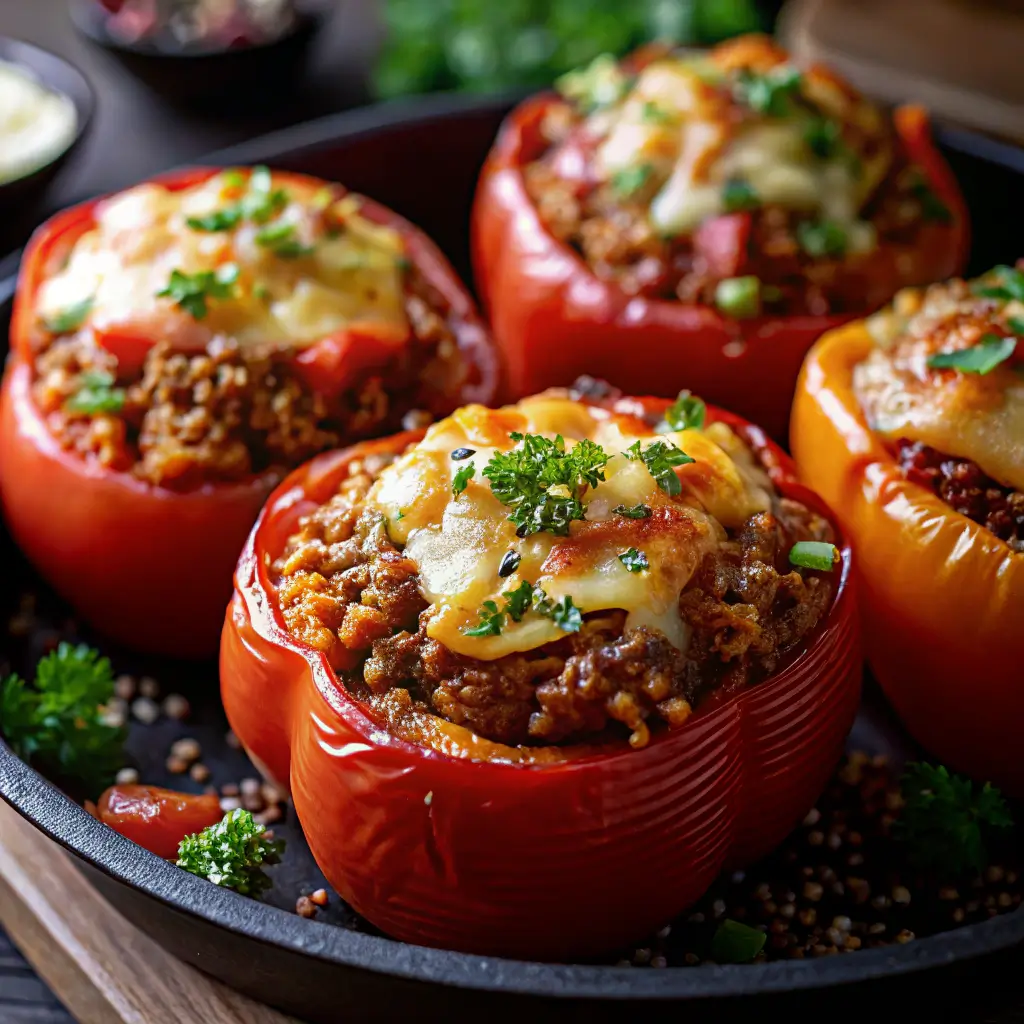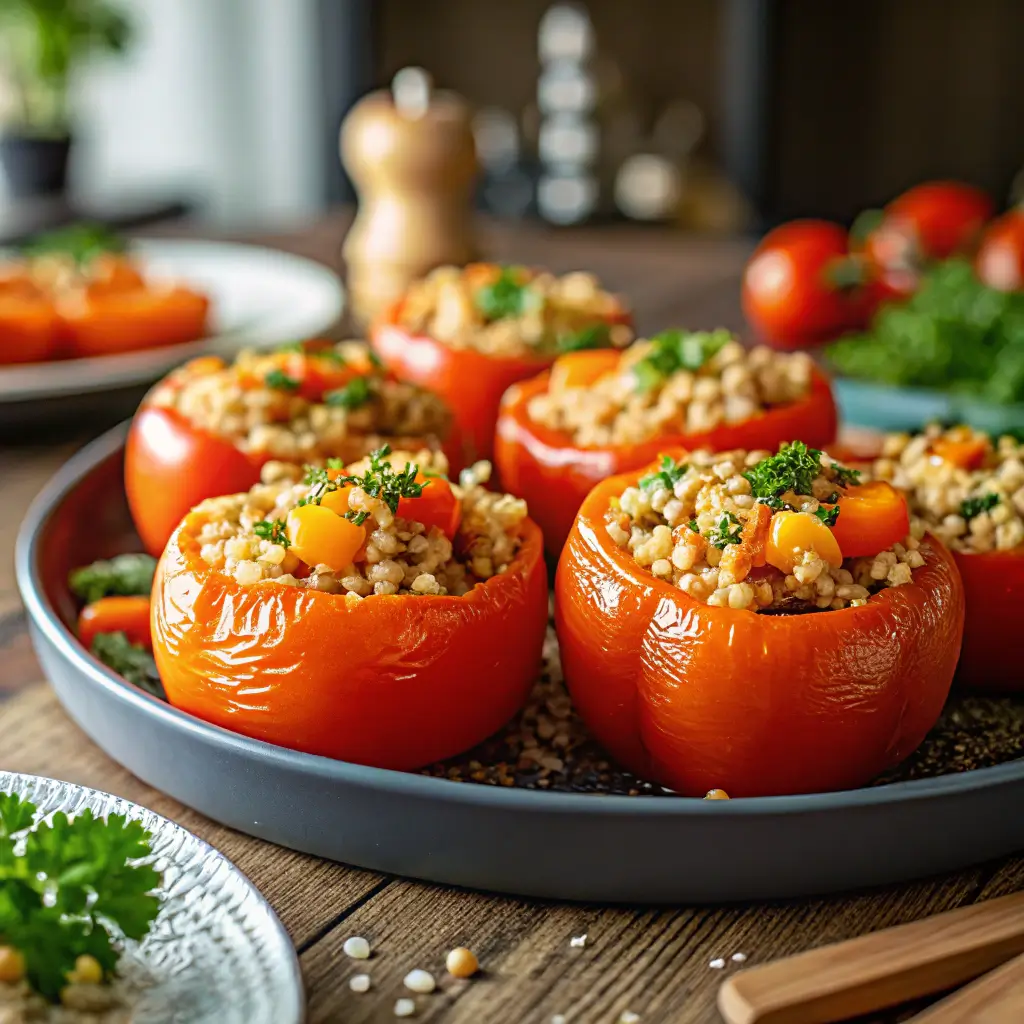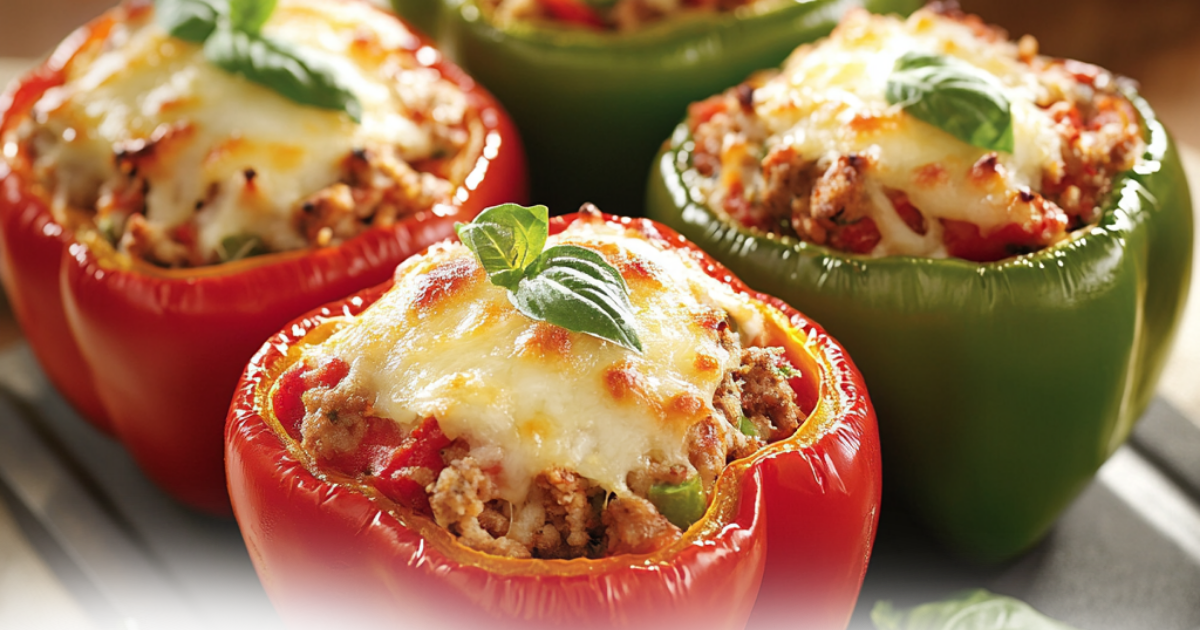Stuffed peppers are a hearty, flavorful dish that’s easy to love but equally frustrating when they turn out soggy. If you’ve ever wondered, “Why are my stuffed peppers watery?” you’re not alone! Many home cooks face this issue, which can ruin the balance of textures and flavors in this classic recipe. Luckily, there are simple reasons behind watery stuffed peppers—and even simpler solutions.
In this article, we’ll explore the common causes of this culinary conundrum, practical ways to fix it, and even some recipe ideas to keep your stuffed peppers both delicious and perfectly textured. So, whether you’re a seasoned chef or a beginner cook, you’ll walk away with all the tips and tricks needed to master stuffed peppers. Let’s dive in!
Table of Contents
Common Causes of Watery Stuffed Peppers
Why Pre-Cooking Peppers Reduces Wateriness
One of the main reasons stuffed peppers turn out watery is skipping the pre-cooking step. When raw peppers are filled and baked, they release a lot of water into the filling as they soften. This excess moisture has nowhere to escape, leaving you with a water-logged dish.
To avoid this, consider lightly roasting or blanching your peppers before stuffing them. Pre-cooking helps reduce their water content, softens them just enough for stuffing, and enhances their flavor. If roasting, place them on a wire rack over a baking sheet at 375°F for 5-7 minutes. For blanching, dunk them in boiling water for 2-3 minutes, then let them cool completely. Either method preps the peppers without making them too soft or watery.
How High-Water Ingredients in Fillings Cause Watery Stuffed Peppers
Sometimes, the filling is the sneaky culprit behind soggy stuffed peppers. Ingredients like tomatoes, zucchini, or pre-cooked rice often hold a lot of water, which they release during baking. While these add flavor and texture, they can also make your peppers watery.

To fix this, choose your ingredients wisely. Drain canned tomatoes thoroughly or sauté fresh vegetables to remove extra moisture. Swap in absorbent fillings like par-cooked rice, quinoa, or breadcrumbs. These not only soak up excess liquid but also add a satisfying texture to your dish. Learn how to prepare fillings with low-moisture cooking techniques to create a better balance.
Baking Temperature: A Key to Solving Watery Stuffed Peppers
Believe it or not, how you bake your stuffed peppers plays a big role in the outcome. Low baking temperatures can trap moisture inside the peppers, while high temperatures evaporate it more effectively. Aim for an oven temperature of around 375°F to 400°F for best results. Bake your peppers uncovered for at least half the time, allowing steam to escape.
Another tip? Avoid overcrowding the baking dish. Stuffed peppers need breathing room to cook evenly. If they’re crammed together, trapped steam leads to—you guessed it—watery results.
Solutions to Prevent Watery Stuffed Peppers
Pre-Cooking Techniques for Peppers
When it comes to avoiding watery stuffed peppers, pre-cooking the peppers is a game-changer. Roasting or blanching them before stuffing not only softens the peppers but also significantly reduces the water they release during baking.
For roasting, preheat your oven to 375°F. Place the peppers cut-side down on a baking sheet lined with parchment paper. Roast them for 5-7 minutes—just enough to dry out the surface slightly without over-softening them. Blanching is another quick method: immerse the peppers in boiling water for 2-3 minutes, then transfer them to an ice bath to stop the cooking process. This step ensures that your peppers won’t release as much water during the final bake.

And don’t forget to season! Lightly salting the inside of the peppers before stuffing not only enhances flavor but also helps draw out extra moisture, What Is the Best Thing to Serve with Stuffed Peppers?
Using Absorbent Ingredients in Fillings
Another smart way to tackle the problem of “Why are my stuffed peppers watery?” is by tweaking the filling. Certain ingredients—like rice, breadcrumbs, or quinoa—can absorb excess liquid, keeping your dish perfectly balanced.
Par-cooked or even uncooked rice works wonders for absorbing water. If you’re using ingredients like tomatoes or zucchini, be sure to drain or sauté them beforehand to eliminate as much water as possible. Adding breadcrumbs to your meat or vegetable mixtures can also soak up moisture while enhancing texture. It’s a simple fix that can transform your stuffed peppers from soggy to sensational.
Adjusting Cooking Methods
Sometimes, the way you bake your stuffed peppers can make all the difference. Baking them on a wire rack allows moisture to drip away, keeping the peppers dry and firm. If you prefer a traditional baking dish, line it with parchment paper to prevent the peppers from sitting in their own juices.
Also, consider uncovering the dish halfway through cooking. This step allows steam to escape, reducing the buildup of water inside the peppers. Combine this with a slightly higher oven temperature—around 400°F—to encourage evaporation and browning.
With these practical techniques, your stuffed peppers will be a triumph instead of a watery letdown.
Alternative Stuffed Pepper Recipes
Low-Moisture Fillings
For those struggling with watery stuffed peppers, a simple swap to low-moisture fillings can make a big difference. Instead of using water-heavy vegetables, focus on hearty, drier ingredients. Ground beef, turkey, or sausage paired with cheese creates a rich, satisfying filling that stays intact. Cheese varieties like mozzarella or cheddar, when used in moderation, can add creaminess without contributing excess water.

Another tip? Mix in spices and herbs for bold flavor without relying on ingredients that release water. Paprika, cumin, or garlic powder can elevate the dish without turning it soggy.
Non-Traditional Peppers for Stuffing
Did you know that the type of pepper you choose can also affect the moisture level? While bell peppers are the most common choice, other peppers, like poblanos or banana peppers, can hold up better during baking. These varieties have a firmer texture and a naturally lower water content, making them less prone to getting watery.
Poblanos, in particular, are perfect for smoky, savory stuffed pepper recipes. They pair beautifully with ingredients like black beans, rice, and cheese for a Southwestern twist on the classic dish.
Creative Cooking Approaches
If baking always leaves your stuffed peppers too moist, why not try a different cooking method? Air frying, for example, gives stuffed peppers a crisp outer texture while eliminating excess moisture. Simply cook them at 375°F in an air fryer for about 10-12 minutes, flipping halfway through.
Grilling is another fantastic option. It adds a smoky flavor and prevents the peppers from steaming in their own juices. Place the stuffed peppers directly on the grill grates over medium heat and cook for 10-15 minutes, turning occasionally.
With these creative twists, you can explore new ways to enjoy stuffed peppers without the worry of watery results.
Troubleshooting Common Issues
Peppers Falling Apart
Have you ever experienced stuffed peppers that collapse into a mushy mess while cooking? This problem often happens because the peppers are overcooked or weren’t prepped properly. To prevent this, choose peppers with thicker walls, like red or yellow bell peppers, as they’re sturdier. If you’re pre-cooking them, stick to a quick roast or blanch to avoid softening them too much.
When stuffing, don’t overfill your peppers. Overcrowded fillings can expand as they cook, causing the pepper walls to split. Finally, use a gentle hand when transferring stuffed peppers to and from the baking dish to keep them intact.
Filling Too Dry After Fixes
Sometimes, in the quest to fix “Why are my stuffed peppers watery?” you may swing too far the other way, leaving the filling too dry. To strike the right balance, add moisture-rich ingredients in moderation, like diced tomatoes or sautéed onions, ensuring they’re drained or cooked beforehand.
Another helpful tip is to use cheese as a binding ingredient. Not only does it add creaminess, but it also helps hold the filling together without excess water. If you still find the filling dry, consider covering your peppers with foil for the first half of baking to trap just enough moisture.
Bitter Tasting Peppers
If your stuffed peppers taste bitter, it could be due to the variety of pepper used. Green bell peppers, for instance, have a sharper taste compared to their sweeter red, yellow, or orange counterparts. Choose sweeter peppers for a milder flavor or pair bitter ones with bold, savory fillings like spiced ground beef or cheese.
Tip: For more cooking inspiration, check out Zenarecipes’ Ultimate Guide to Baking Perfectly Moist Muffins to master balancing moisture in your recipes.
FAQs About Stuffed Peppers
Why Do My Stuffed Peppers Release Water During Cooking?
The most common reason is the high water content in both the peppers and the filling. Bell peppers naturally contain water that releases when heated, especially if they aren’t pre-cooked. Similarly, moist fillings, like cooked rice or diced tomatoes, can contribute to the problem. Pre-cooking the peppers and using absorbent ingredients in the filling can help.
Can I Prepare Stuffed Peppers in Advance Without Them Becoming Watery?
Absolutely! To avoid sogginess, keep the filling and peppers separate until just before baking. Store pre-cooked peppers and prepared filling in airtight containers in the fridge. When you’re ready to bake, stuff the peppers and cook as usual. This method keeps both components fresh and prevents water from pooling.
How Do I Choose the Best Peppers for Stuffing?
For sturdier stuffed peppers, opt for red, yellow, or orange bell peppers, which are sweeter and have thicker walls compared to green peppers. Always pick ones that stand upright on a flat surface to prevent tipping during baking.

